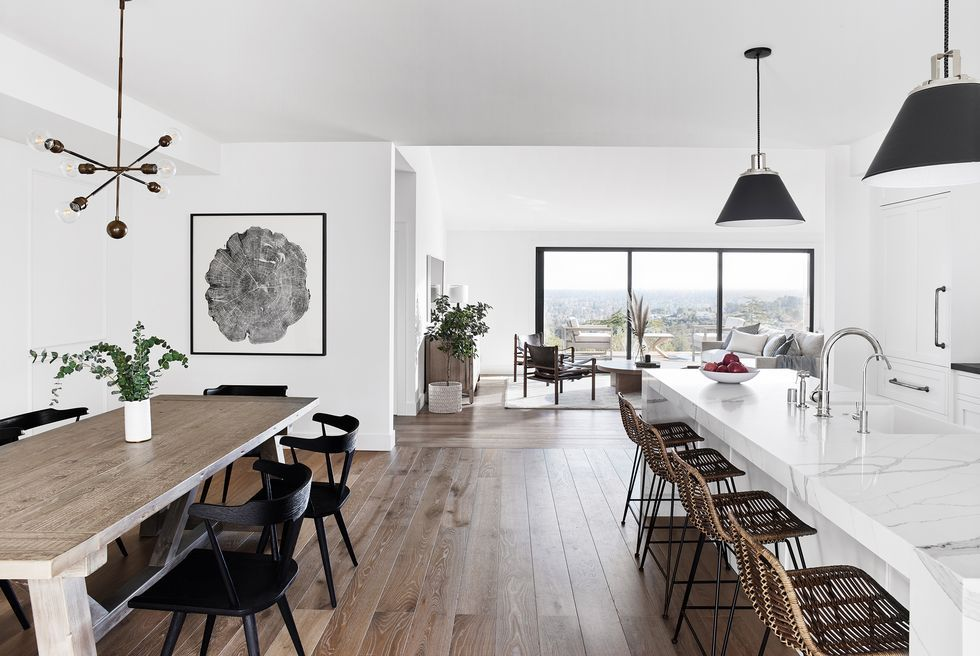
The 20th century saw numerous design trends emerge, perfect for home interiors. These trends showcased the potential to maximize a home’s aesthetic appeal. With so many options, selecting the ideal style can be challenging. However, the core principles often boil down to simplicity and practicality. Above all, a home’s unique identity is paramount. This makes Scandinavian design an excellent choice for your interior. originating in the 1950s, it remains a timeless and iconic style to this day.
Scandinavian design transcends mere craftsmanship and Bohemian aesthetics. It’s more than just detailed, neutral interiors. It emphasizes the deliberate arrangement of each element within a room. This careful placement truly defines the Scandinavian style. Let this guide illuminate how to elevate your living space. discover our top tips for decorating your home with Scandinavian flair.
Choose Neutral or Light Colors
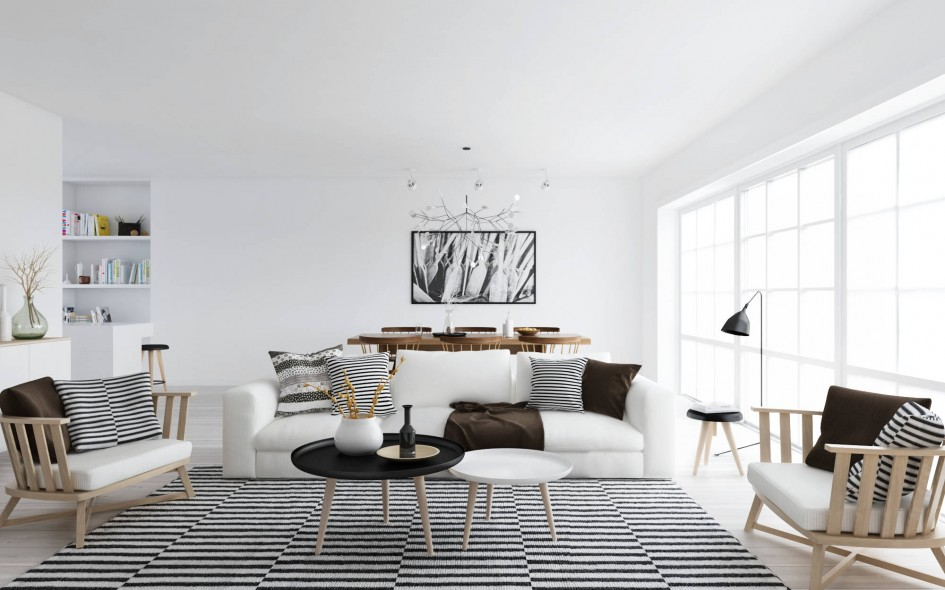
Scandinavian design is known for its neutral and light color palettes. Think nudes, grays, whites, and even blacks creating a clean, minimalist aesthetic.While simple, it emphasizes the space’s key features. These calming colors can be enhanced with complementary shades. The overall ambiance is what truly captivates. You can add pops of color through textiles, flooring, or even the ceiling, perfectly complementing the Scandinavian feel.
Trying different color combinations is highly recommended. If you like vibrant shades like red, yellow, blue, or green, use them in lighter tones. Scandinavian design typically uses two to three colors with varying shades. The overall look depends on your preference. Earthy tones like brown and green are popular in living rooms. These colors work well with lighter shades, enhancing natural light from windows. Besides furniture and materials, color is crucial in interior design. Light colors can be combined, but one should be a versatile material that highlights the others.
Declutter the Space
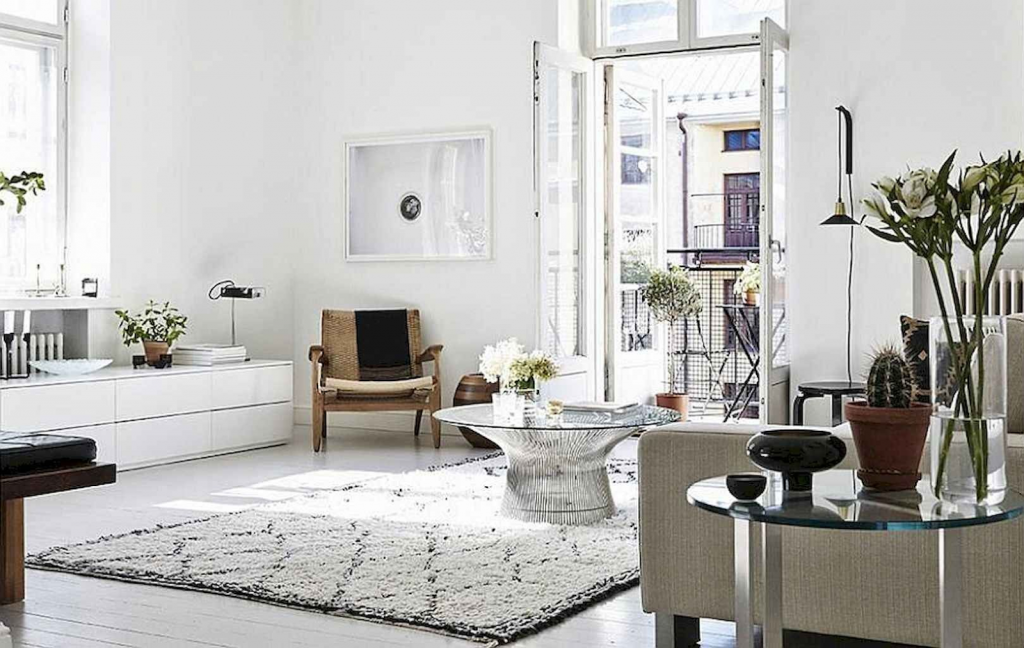
Scandinavian design is frequently confused with pure minimalism. While related, it’s not the same. When designing a space, prioritize neatness and decluttering. This creates a clean backdrop to showcase key elements.Simplicity and order define the living area’s focus. Minimize decorations to avoid a cluttered, overwhelming appearance.
For any space, prioritize essential and functional items. Retain necessities and eliminate elements that create a cluttered appearance. The Scandinavian minimalist philosophy emphasizes highlighting key features. Notice the clarity in the image above. Essential items are present, but kept to a minimum, like the magazines, books, and vases. Just because items look aesthetically pleasing together doesn’t mean they all belong in your living area. Simplicity is superior and flawlessly executed when done right.As Ludwig Mies van der Rohe said, “less is more.” Only add items you deem necessary to avoid overcrowding the space.
Wood and Metal is a Plus

Scandinavian interiors frequently feature wood and metal.These adaptable materials create a striking and memorable aesthetic. They influence the perceived size of a space. Wood offers diverse colors, textures, and types, adding warmth and comfort to a home. It’s suitable for walls, ceilings, and floors. Whether used as a primary element or an accent, wood complements materials like metal and fabric. Consequently, it integrates seamlessly with the interior architecture.
Contemporary Scandinavian design excels at highlighting furniture. Metal is key to the linear look of walls, furniture, and floors. While it might seem overly metallic, it emphasizes simple details. This includes light fixtures and furniture accents. Adding a touch of metal to your living space is a great idea. Plus, metallic doesn’t always mean shiny metal.It also works beautifully in a matte finish.
The photo showcases finished metal in the computer chair and lighting. It beautifully offsets the wood’s warmth and the room’s cozy feel. The metal also complements the living area’s clean lines. Metal and wood create an ideal pairing, notably in Scandinavian designs.
Add Botanical Pieces
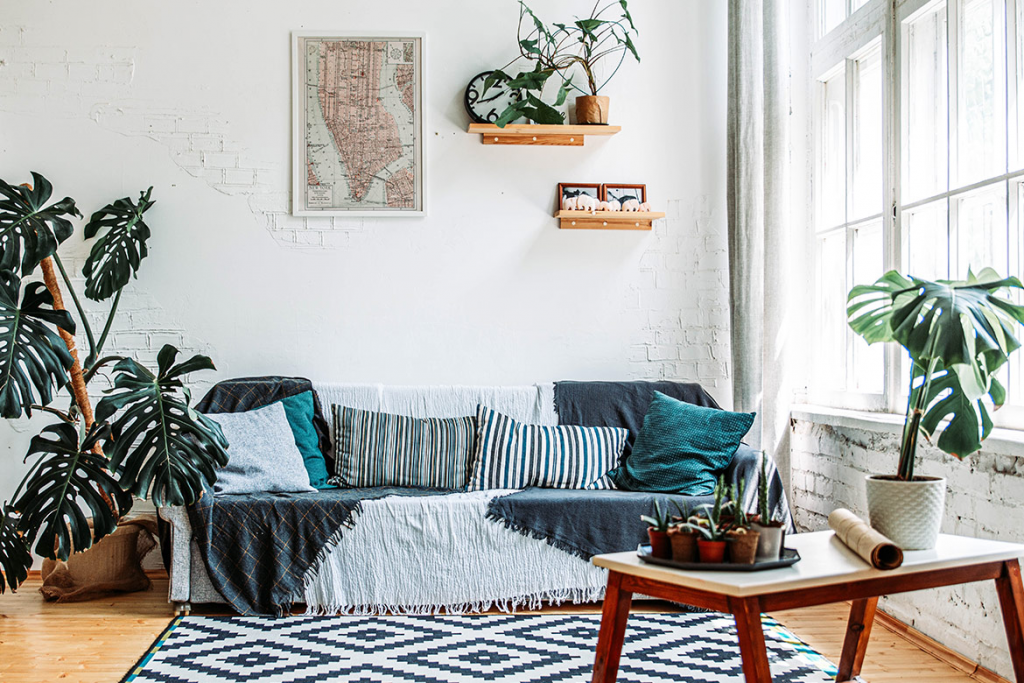
Bringing nature indoors is a fantastic way to enhance your living space. Plants in Scandinavian-inspired homes create a welcoming and comfortable atmosphere. They act as a bridge, harmonizing the warmth and coolness of the materials used. Indoor plants help balance the overall environment in any home. Neutral color schemes are also highly recommended for living areas. Plants and flowers enhance the cohesion of all design elements. carefully consider the color, size, and form of the plant you choose. Furthermore, botanical elements can make your indoor spaces more engaging and vibrant. They also foster a sense of connection to the natural world.
The design showcases varied plant arrangements. The designer favors indoor plants that are free-standing, wide, tall, sturdy, and crawling. This highlights the linear furniture arrangement. Light dining area materials blend with the warmth of wood and the natural plants. The focus is on plant types that enhance the Scandinavian aesthetic. Botanical plants offer unmatched accent color and a refreshing ambiance.
Pick Versatile and Warm Textiles
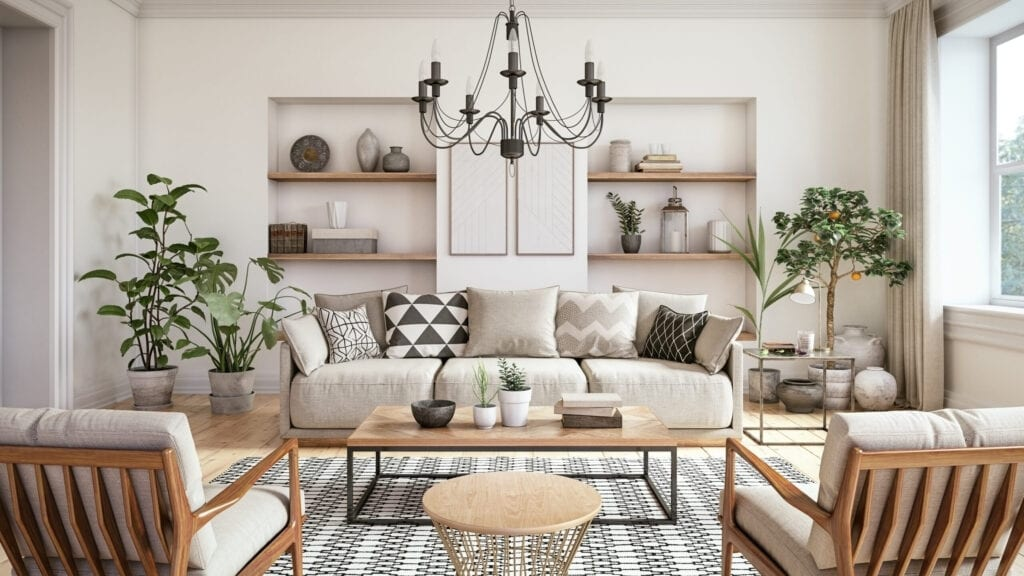
The latest trend in Scandinavian home design focuses on textile choices. Walls, ceilings, and floors typically feature light or dark shades. To enhance these elements, select warm and inviting textiles. Scandinavian interiors often incorporate textured fabrics. Whether patterned or simple, these textiles serve as accents. They add visual interest to the clean, minimalist aesthetic. A blend of Bohemian-chic and Scandinavian styles is a popular textile choice.
Experiment with diverse textile pairings, focusing on color and texture harmony. As a notable example, robust matte fabrics pair beautifully with cozy knitted blankets and pillowcases, as illustrated. While the textile colors might deviate slightly from perfect matches, they enhance the overall Scandinavian aesthetic. It’s wise to test fabric swatches of varying types and colors beforehand to ensure a balanced design. Moreover, carpets are excellent additions, particularly in living spaces. The comforting warmth they provide underfoot is a desirable feature for any home.
Pick the Perfect Lighting Fixtures
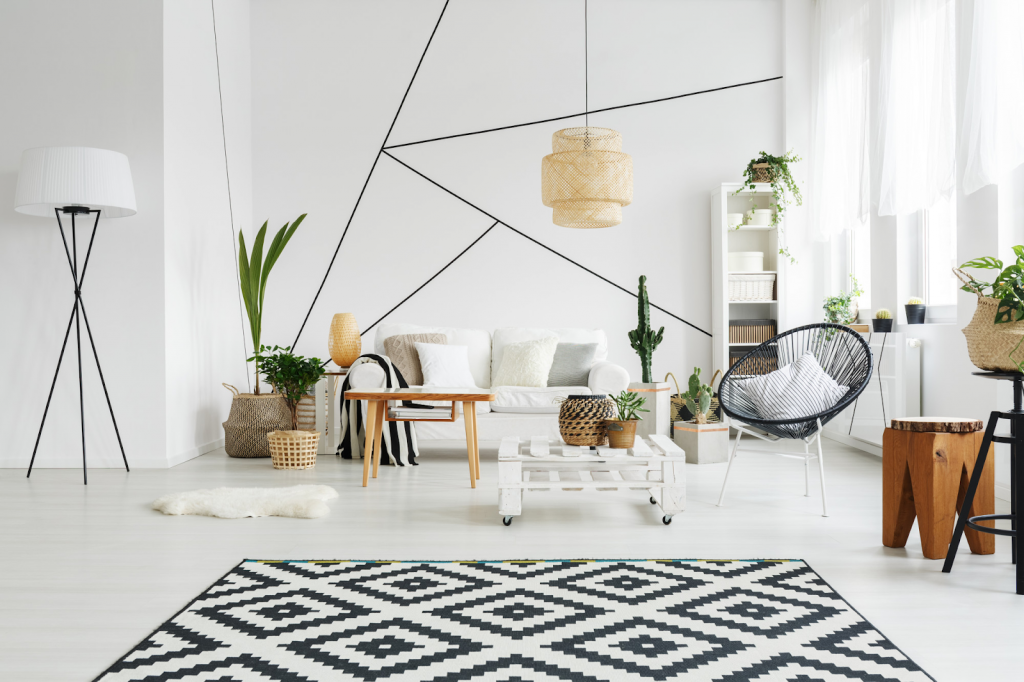
Complete your Scandinavian interior with carefully chosen accent lights. Besides natural light, artificial lighting ensures consistent and balanced illumination. After all, sunshine isn’t guaranteed every day. Residential spaces commonly use three lighting types: main, supplementary, and ambient.
The chandelier serves as the primary artificial light source in the picture. Its design deviates from the norm. The reflector features semi-woven wooden fibers, creating textured lighting effects. An industrial-style floor lamp provides supplementary lighting with decent glare management. This suits individuals who prefer less luminous settings. While it functions as a direct downlight, its intensity is lower than the chandelier’s. Even though ambient lighting isn’t obvious in the image, recessed downlights would be a good example. They provide subtle illumination to darker areas.
Conclusion
Scandinavian house designs offer versatility for spaces of all sizes. This adaptability makes it a popular interior theme. Experimentation and research are key to finding the perfect combination of elements. Focus on the placement, color palette, textures, and scale of each item.The design doesn’t need to be extravagant. Prioritize functionality and efficiency for the home. Explore various minimalist layouts that complement Scandinavian architectural principles.Ultimately, a design that is both gorgeous and practical is ideal.
